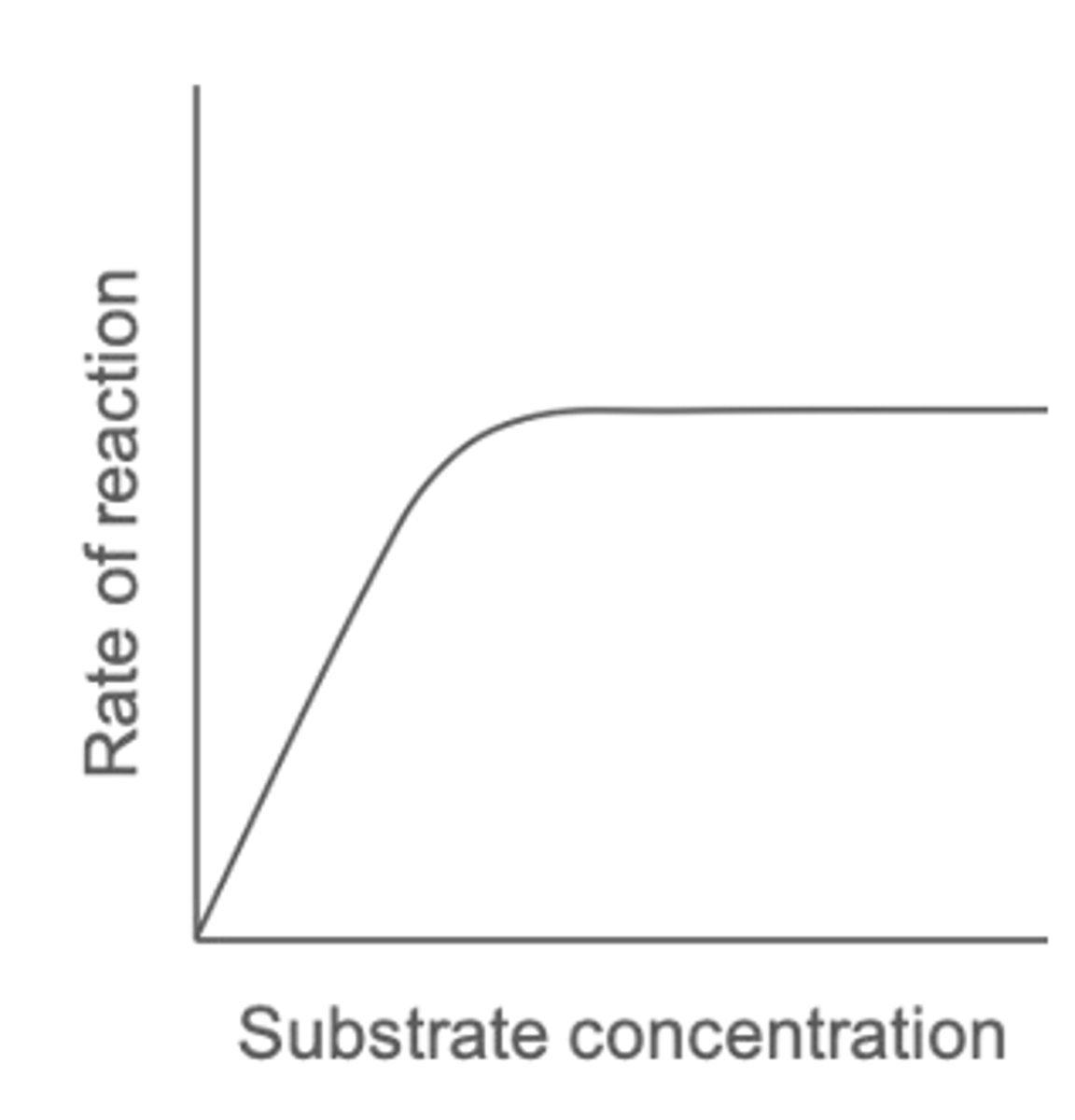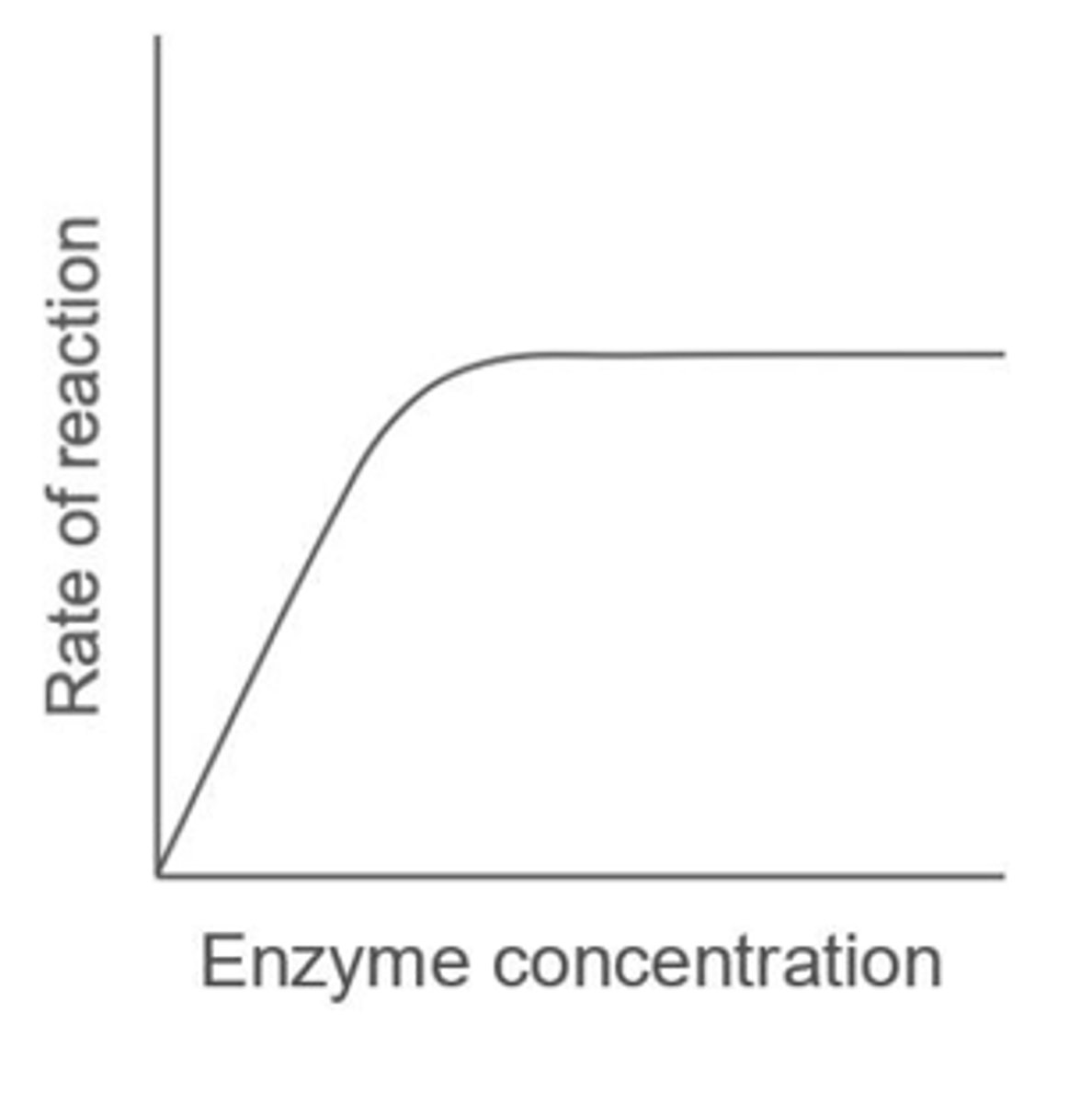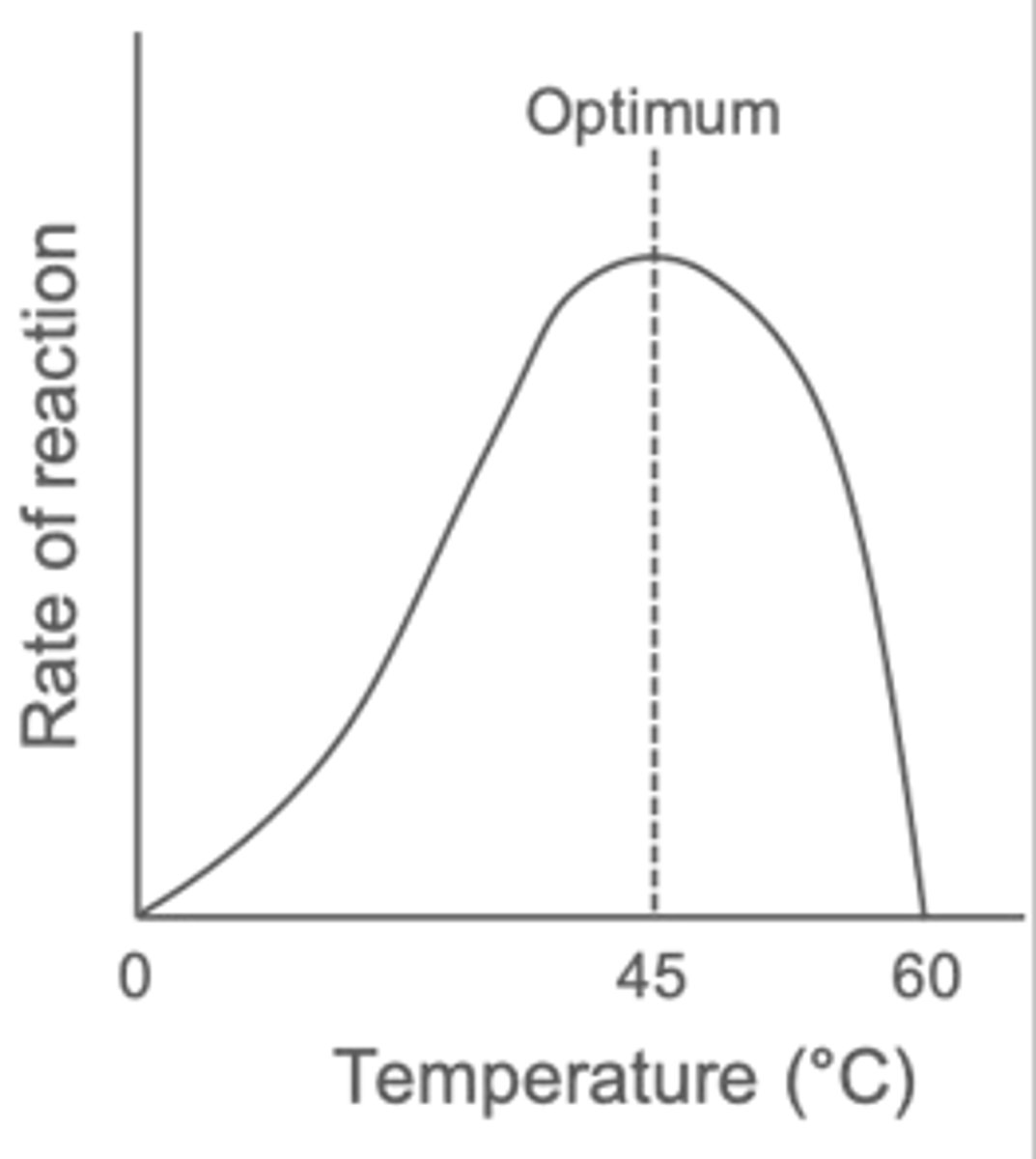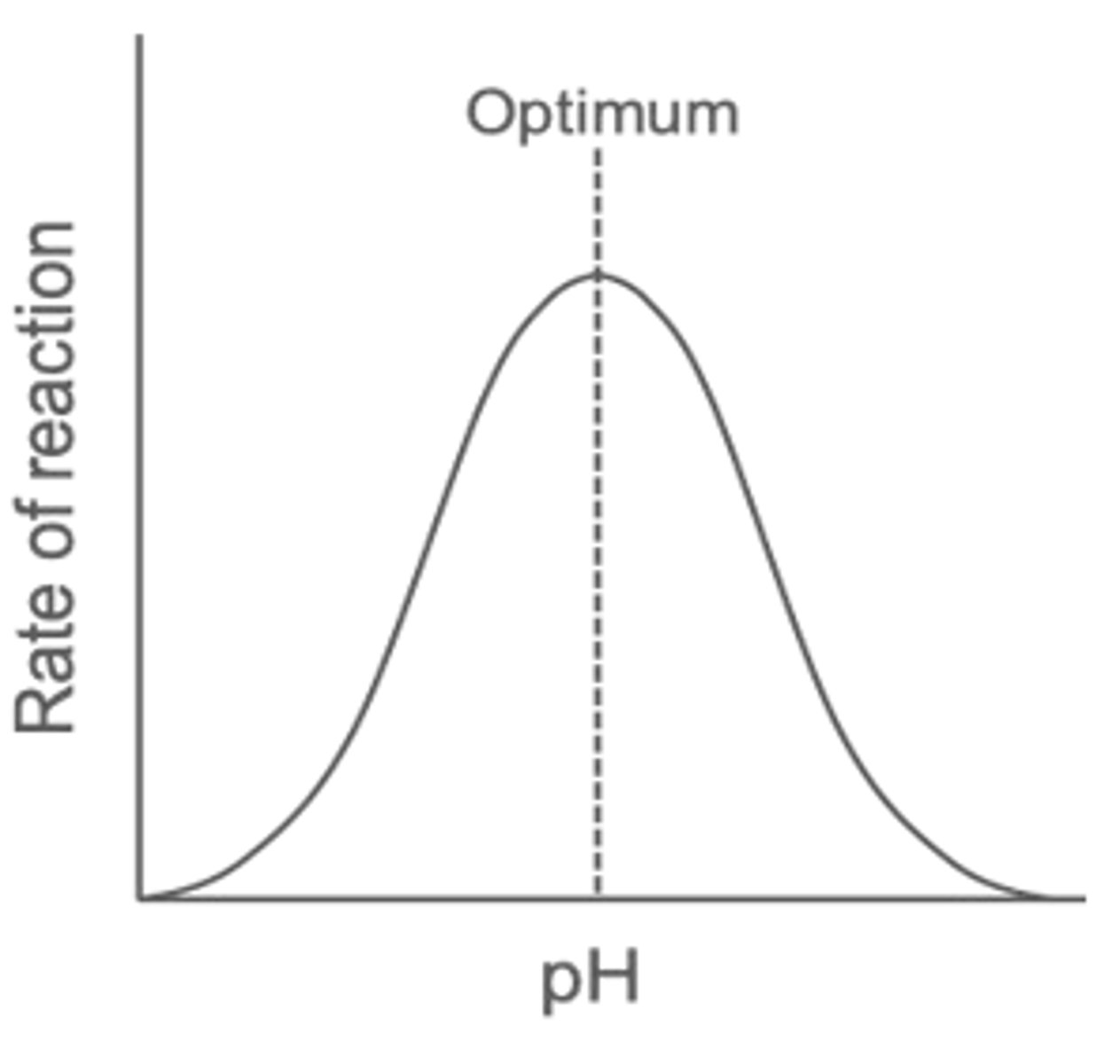2.1.4 enzymes
1/24
Earn XP
Name | Mastery | Learn | Test | Matching | Spaced |
|---|
No study sessions yet.
25 Terms
What are enzymes?
Proteins that act as biological catalysts for intra & extracellular reactions to determine structure & function. Affect metabolism of cells & whole organism. Specific tertiary structure determines shape of active site, complementary to a specific substrate. Formation of enzyme-substrate (ES) complexes lowers activation energy of metabolic reactions.
Give an example of an enzyme that catalyses intracellular reactions.
Catalase: catalyses decomposition of hydrogen peroxide (which causes oxidative stress) into water + oxygen.
Give 2 examples of enzymes that catalyse extracellular reactions.
Amylase: carbohydrase catalyses digestion of starch to maltose in saliva/ small intestine lumen.
Trypsin: pancreatic endopeptidase catalyses hydrolysis of peptide bonds in small intestine lumen.
Explain the induced fit model of enzyme action.
● Shape of active site is not directly complementary to substrate & is flexible.
● Conformational change enables ES complexes to form when substrate adsorbs.
● This puts strain on substrate bonds, lowering activation energy. Bonds in enzyme-product complex are weak, so product desorbs.
Explain the lock and key model of enzyme action.
Suggests that active site has a rigid shape determined by tertiary structure so is only complementary to 1 substrate. Formation of ES complex lowers activation energy.
Bonds in enzyme-product complex are weak, so product desorbs.
Name 5 factors that affect the rate of enzyme-controlled reactions.
● enzyme concentration
● substrate concentration
● concentration of inhibitors
● pH
● temperature
How does substrate concentration affect rate of reaction?
Given that enzyme concentration is fixed, rate increases proportionally to substrate concentration.
The rate levels off when maximum number of ES complexes form at any given time.

How does enzyme concentration affect rate of reaction?
Given that substrate is in excess, rate increases proportionally to enzyme concentration.
Rate levels off when maximum number of ES complexes form at any given time.

How does temperature affect the rate of enzyme-controlled reactions?
Rate increases as kinetic energy increases & peaks at optimum temperature.
Above optimum, ionic & H-bonds in 3° structure break = active site no longer complementary to substrate (denaturation).

What is the temperature coefficient?
Q10 measures the change in rate of reaction per 10℃ temperature increase.
Q10 = R2 / R1 (where R represents rate)
How does pH affect rate of reaction?
Enzymes have a narrow optimum pH range.
Outside range, H+/ OH- ions interact with H-bonds & ionic bonds in 3° structure = denaturation.

How do competitive inhibitors work?
Bind to active site since they have similar shape to substrate. Temporarily prevent ES complexes from forming until released.
Increasing substrate concentration decreases their effect.
How do non-competitive inhibitors work?
Bind at allosteric binding site.
Trigger conformational change of active site.
Increasing substrate concentration has no impact on their effect.
What is end-product inhibition?
One of the products of a reaction acts as a competitive or non-competitive inhibitor for an enzyme involved in the pathway.
Prevents further formation of products.
What are irreversible inhibitors?
Permanently prevent formation of ES complexes.
Heavy metal ions e.g. mercury, silver cause disulphide bonds in tertiary structure to break.
Bind to enzymes by strong (covalent) bonds e.g. cyanide binds to cytochrome c.
What are reversible inhibitors?
May be competitive or non-competitive. Bind to enzyme temporarily e.g. by
H-bonds or a few ionic bonds.
ES complexes can form after the inhibitor is released.
Define metabolic poison.
Substance that damages cells by interfering with metabolic reactions. Usually an inhibitor.
Give some examples of metabolic poisons.
Respiratory inhibitors include:
● cyanide: non-competitive, irreversible, inhibits cytochrome c oxidase
● malonate: competitive, inhibits succinate dehydrogenase
● arsenic: competitive, inhibits pyruvate dehydrogenase
How do some medicinal drugs act as inhibitors?
Penicillin: non-competitive inhibitor of transpeptidase to prevent formation of peptidoglycan cross-links in bacterial cell wall.
Ritonavir: inhibits HIV protease to prevent assembly of new virions.
What are inactive precursors in metabolic pathways?
To prevent damage to cells, some enzymes in metabolic pathways are synthesised as
inactive precursors e.g. proteases.
One part of the precursor acts an inhibitor. ES complexes form when it is removed.
What are cofactors?
Non-protein compounds required for enzyme activity:
● coenzymes
● inorganic cofactors
● prosthetic groups
What are coenzymes?
Organic cofactors. Do not bind permanently. Often transport molecules or electrons between enzymes.
Frequently derived from water-soluble vitamins
e.g. the hydrogen acceptor NAD is derived from niacin.
What are inorganic cofactors? Give an example.
Facilitate temporary binding between substrate and enzyme. Often metal ions
e.g. Cl- is the cofactor for amylase.
What are prosthetic groups? Given an example.
Tightly-bound cofactors act as a permanent part of enzyme’s binding site
e.g. Zn2+ for carbonic anhydrase.
Suggest how a student could produce a desired concentration of solution from a stock solution.
volume of stock solution = (required concentration x final volume needed) / concentration of stock solution
volume of distilled water = final volume needed - volume of stock solution